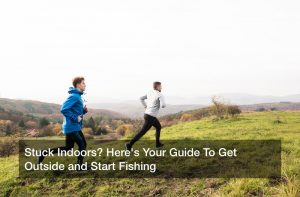
Fishing is a time-honored activity around the world, and in times past, local communities would go fishing for sustenance, from using fish nets to hunting seals and whales by boat. Today, this is commercialized and professional work, while everyday people instead go fishing as an outdoor recreational activity. Today’s fishing is a sport more than a way of life, and this outdoor sport is plenty popular. In the year 2017, for a recent example, around 11.6 million American youths aged six to 17 went fishing, and they were among the 51.59 million people who went fishing that year. In fact, over 60% of those anglers were under 45 years of age, showing that this sport has universal appeal. As for fishing techniques, there are some options, including fly fishing. But what sets fly fishing apart from regular fishing? A fly fisher needs fly rod reels, special fly rods, certain bait types, and the right line for the job. They can find all this at local retailers.
Fly Fishing Gear
When someone decides to get into fly fishing, they are encouraged to visit local outdoor retailers so they can find everything that they need, and while there, they can consult store staff to find the best equipment for their price range. For example, fly rod reels come in different brand names and types, and the same is true of the fishing rods that those fly rod reels are affixed to. And of course, the customer will get the right kind of line, hooks, and bait to complete their fishing rod and fly rod reels, and fly fishing bait tends to be artificial. Most often, such bait is small and covered with feathers to imitate insects, but if a fisher prefers, they can use live bait such as crickets for the job.
A fly fisher will need a few more things, too, such as the right outfit. As for why, take note that a fly fisher will not stand on a pier or a boat like regular fishers do; instead, fly fishers tend to stand directly in the stream or river that they are fishing in. To avoid getting soaked and chilled, fly fishers wear tall, warm, waterproof boots that allow them to stand knee deep or even waist deep in the water, and some boots are part of an overalls set for convenience. In addition, the fly fisher ought to wear a vest that has many pockets, so they can store spare, small items in there since they are too far from dry surfaces for item storage. For personal protection, a fly fisher should wear a wide-brimmed hat to protect their face and neck from the sun, and wear sunglasses to shield their eyes from strong glare off the water’s surface.
Fly fishing gear bags are also a fine idea, and they too can be found at outdoor retailers during a shopping trip. Such gear bags are tough and come with convenient carrying straps, not to mention compartments and zipper pouches to store spare items like reels, line, bait, and much more. Those bags vary in shape, size, and price.
Going Fishing
Once a new angler has all their stuff, they can go on a trip with a more experienced fly fisher and learn how it is done. As for technique, a new angler will learn that they should not cast the bait and use its weight to draw out the line; the bait is too light for that. Instead, a fly fisher will move their rod so they cast the line directly, and that line will land gently across the water’s surface to deposit the bait. This means there is no disruptive splash that may scare off fish. From there, the fly fisher can wait for a bite, then draw in a fish.
Like other anglers, fly fishers can choose whether to keep the fish they catch, or simply remove the hook from its mouth and return it. Local wildlife conservation signs and plaques will state how many fish of each local species an angler may keep, and describe how long each fish must be. Following those regulations helps maintain the local population for future fishing trips.


